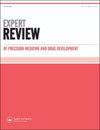Detecting and targeting NTRK gene fusions in cholangiocarcinoma: news and perspectives
IF 1.2
Q4 PHARMACOLOGY & PHARMACY
Expert Review of Precision Medicine and Drug Development
Pub Date : 2021-03-31
DOI:10.1080/23808993.2021.1910023
引用次数: 7
Abstract
Cholangiocarcinomas (CCAs) are rare and aggressive tumors accounting for less than 1% of all malignancies worldwide and approximately the 10–15% of all primary liver cancers [1]. Unfortunately, advanced CCA carries a poor prognosis and the benefit provided from systemic treatments is modest [2]. In the last decade, CCA has emerged as a disease entity presenting several potentially druggable mutations, and the advent of next-generation sequencing (NGS) has led to a new era in CCA management [3]. In fact, a number of potential therapeutic targets have been described, including fibroblast growth factor receptor (FGFR) fusions, isocitrate dehydrogenase (IDH)-1 and IDH-2 mutations, and BRAF mutations [4]. In particular, some molecularly targeted treatments have been shown to improve progression-free survival (PFS) and overall survival (OS), with these therapies that add to the armamentarium of therapeutic options currently available for CCA patients [5]. Few data are available on the putative role of other molecular aberrations which have already provided interesting results in other solid tumors, including neurotrophic tropomyosin receptor kinase (NTRK) fusions. Several genes have been suggested to represent fusions partner of NTRK, including the transcription factor ETV6 and BCAN. Notably enough, NTRK1, NTRK2, and NTRK3 gene fusions have been suggested to act as oncogenic drivers in a range of solid tumors, including gastrointestinal cancers such as CCA [6]; these fusions have been highlighted in around 1% of all pediatric and adult malignancies, with recent studies suggesting their role as promising therapeutic targets for anticancer treatment [7]. In particular, the frequency of these fusions seems to vary from less than 1% in cancer types such as colorectal, lung, pancreatic, breast cancers, melanoma and other hematological and solid tumors, up to 25% in tumors including thyroid, spitzoid, and gastrointestinal stromal tumors, to more than 90% in rare cancer types such as secretory breast carcinoma, mammary analogue secretory carcinoma, congenital infantile fibrosarcoma, and congenital mesoblastic nephroma [6–8]. Typically, these molecular aberrations occur following the fusion of the C-terminal tyrosine kinase with a N-terminal fusion partner, leading to ligand-independent phosphorylation. Consequently, several pathways are activated, resulting in cellular growth and increase proliferation [8]. In recent years, several methods have been used to diagnose NTRK fusions. Among these, fluorescent in situ hybridization reverse-transcriptase PCR, and NGS; in addition, beyond tumor-based approaches, NTRK fusions can be potentially detected also through plasma-based cell-free DNA testing. As regards biliopancreatic malignancies, in a report presented at ESMO World Congress on Gastrointestinal Cancer 2020, Demols and colleagues explored the prevalence of NTRK gene fusions in 149 CCAs and pancreatic adenocarcinomas through the use of different techniques [9]. More specifically, the authors used a two-step diagnostic method providing for immunohistochemistry and RNA-based NGS. Interestingly, according to the results of this study, NTRK gene fusion was observed in only 1 out of 149 CCA patients, with a prevalence in this population of 0.67% [9]. Similarly, another recent report conducted by Solomon and colleagues identified only 2 NTRK gene fusions among 787 CCA patients, with an even lower prevalence of 0.25% [10]. Two potent TRK inhibitors have recently emerged as novel therapeutic options in NTRK fusion-positive malignancies, entrectinib (RXDX-101) and larotrectinib (LOXO-101). Interestingly, these two agents reported a broad range of action, since entrectinib and larotrectinib have also shown antitumor efficacy against malignancies harboring ROS1 and ALK fusions, molecular aberrations that have been observed in approximately the 3% of CCAs – according to previous studies [11]. As regards the former agent, recent reports have highlighted that entrectinib treatment could provide clinically meaningful and durable responses in patients with NTRK fusion-positive tumors [12]. In fact, impressive response rates have been observed in basket trials assessing tumor-agnostic therapeutic approaches, with overall response rates (ORRs) ranging from 55% to 75% in previously treated patients with advanced malignancies. Thus, we are witnessing a growing interest toward this molecule, with entrectinib who is candidate for becoming an important treatment option in NTRK fusion-positive cancers [13].检测和靶向胆管癌NTRK基因融合:新闻与展望
胆管癌(CCAs)是一种罕见的侵袭性肿瘤,占全球所有恶性肿瘤的不到1%,约占所有原发性肝癌的10-15%[1]。不幸的是,晚期CCA预后不佳,系统治疗的益处不大[2]。在过去的十年里,CCA已经成为一种疾病实体,呈现出几种潜在的药物突变,下一代测序(NGS)的出现开创了CCA管理的新时代[3]。事实上,已经描述了许多潜在的治疗靶点,包括成纤维细胞生长因子受体(FGFR)融合、异柠檬酸脱氢酶(IDH)-1和IDH-2突变以及BRAF突变[4]。特别是,一些分子靶向治疗已被证明可以提高无进展生存期(PFS)和总生存期(OS),这些治疗增加了目前可用于CCA患者的治疗选择[5]。关于其他分子畸变的假定作用,几乎没有可用的数据,这些数据已经在其他实体瘤中提供了令人感兴趣的结果,包括神经营养原肌球蛋白受体激酶(NTRK)融合。一些基因被认为代表NTRK的融合伴侣,包括转录因子ETV6和BCAN。值得注意的是,NTRK1、NTRK2和NTRK3基因融合已被认为在一系列实体瘤中起致癌驱动因素的作用,包括胃肠道癌症,如CCA[6];这些融合在大约1%的儿童和成人恶性肿瘤中得到了强调,最近的研究表明它们是抗癌治疗的有前景的治疗靶点[7]。特别是,这些融合的频率似乎在癌症类型如结直肠癌、肺癌、胰腺癌、乳腺癌、黑色素瘤和其他血液学和实体瘤中不到1%,在包括甲状腺、斯皮唑类和胃肠道间质瘤在内的肿瘤中高达25%,在罕见的癌症类型如分泌性乳腺癌、,先天性婴儿纤维肉瘤和先天性中幼细胞肾瘤[6-8]。通常,这些分子畸变发生在C-末端酪氨酸激酶与N-末端融合伴侣融合后,导致配体非依赖性磷酸化。因此,几种途径被激活,导致细胞生长和增殖增加[8]。近年来,已有几种方法用于诊断NTRK融合。其中,荧光原位杂交逆转录酶聚合酶链式反应和NGS;此外,除了基于肿瘤的方法外,NTRK融合也可以通过基于血浆的无细胞DNA测试来检测。关于胆胰恶性肿瘤,在2020年ESMO世界癌症大会上发表的一份报告中,Demols及其同事通过使用不同的技术探讨了149例CCA和胰腺腺癌中NTRK基因融合的患病率[9]。更具体地说,作者使用了两步诊断方法,提供了免疫组织化学和基于RNA的NGS。有趣的是,根据这项研究的结果,149名CCA患者中只有1人观察到NTRK基因融合,该人群的患病率为0.67%[9]。同样,Solomon及其同事最近的另一份报告在787名CCA患者中仅发现了2例NTRK基因融合,患病率更低,为0.25%[10]。最近出现了两种强效TRK抑制剂作为NTRK融合阳性恶性肿瘤的新治疗选择,恩特替尼(RXDX-101)和拉罗替尼(LOXO-101)。有趣的是,这两种药物的作用范围很广,因为恩替替尼和拉罗替尼也对含有ROS1和ALK融合的恶性肿瘤显示出抗肿瘤功效,根据之前的研究[11],在大约3%的CCA中观察到了分子畸变。关于前一种药物,最近的报告强调,恩曲替尼治疗可以为NTRK融合阳性肿瘤患者提供临床意义和持久的反应[12]。事实上,在评估肿瘤不可知治疗方法的篮子试验中,已经观察到了令人印象深刻的有效率,在先前治疗过的晚期恶性肿瘤患者中,总有效率(ORR)在55%至75%之间。因此,我们看到人们对这种分子的兴趣越来越大,恩特替尼有望成为NTRK融合阳性癌症的重要治疗选择[13]。
本文章由计算机程序翻译,如有差异,请以英文原文为准。
求助全文
约1分钟内获得全文
求助全文
来源期刊

Expert Review of Precision Medicine and Drug Development
PHARMACOLOGY & PHARMACY-
CiteScore
2.30
自引率
0.00%
发文量
9
期刊介绍:
Expert Review of Precision Medicine and Drug Development publishes primarily review articles covering the development and clinical application of medicine to be used in a personalized therapy setting; in addition, the journal also publishes original research and commentary-style articles. In an era where medicine is recognizing that a one-size-fits-all approach is not always appropriate, it has become necessary to identify patients responsive to treatments and treat patient populations using a tailored approach. Areas covered include: Development and application of drugs targeted to specific genotypes and populations, as well as advanced diagnostic technologies and significant biomarkers that aid in this. Clinical trials and case studies within personalized therapy and drug development. Screening, prediction and prevention of disease, prediction of adverse events, treatment monitoring, effects of metabolomics and microbiomics on treatment. Secondary population research, genome-wide association studies, disease–gene association studies, personal genome technologies. Ethical and cost–benefit issues, the impact to healthcare and business infrastructure, and regulatory issues.
 求助内容:
求助内容: 应助结果提醒方式:
应助结果提醒方式:


